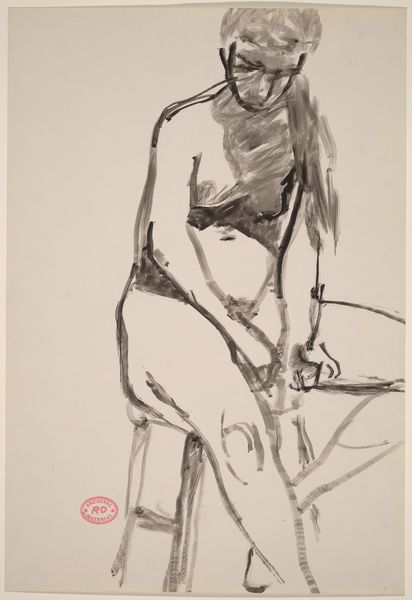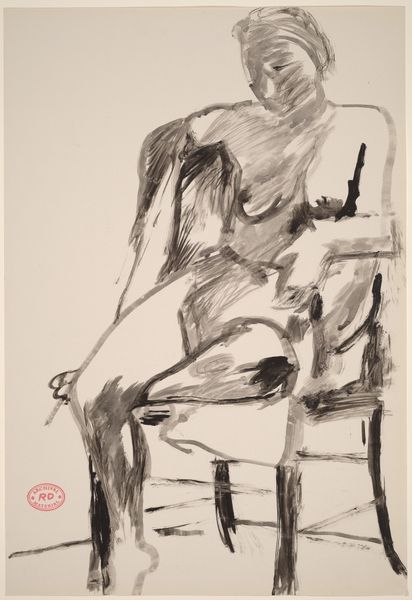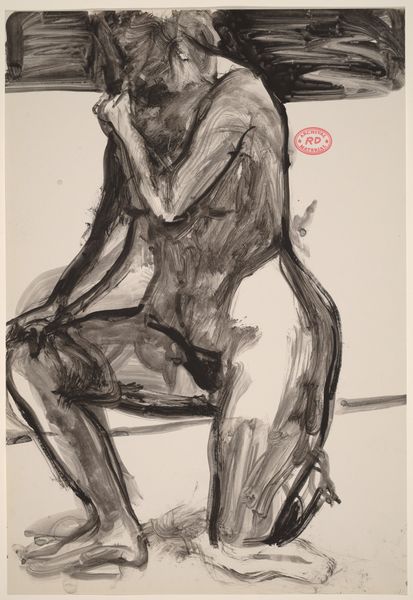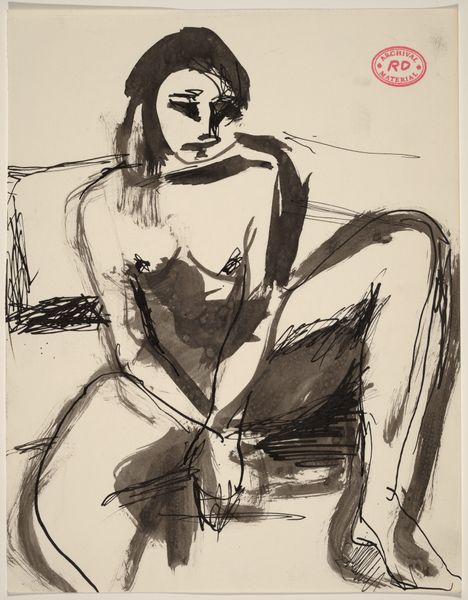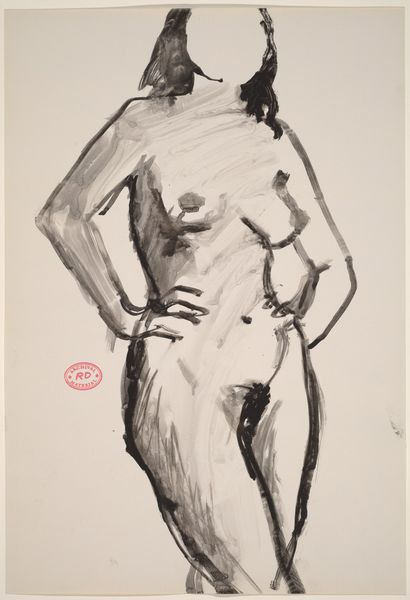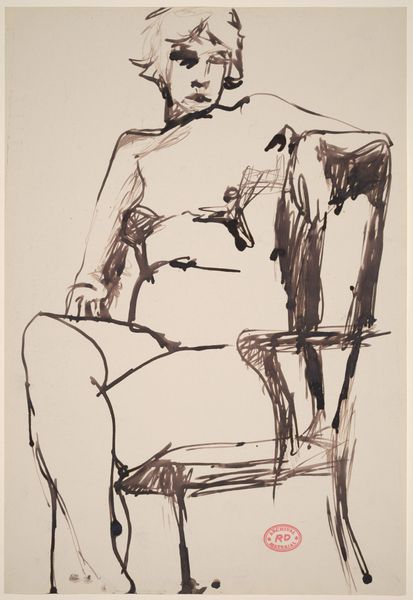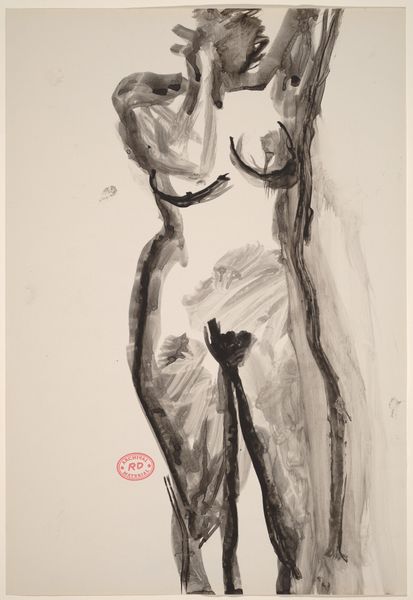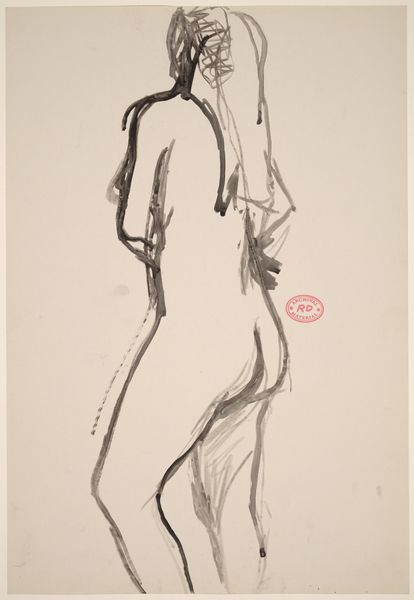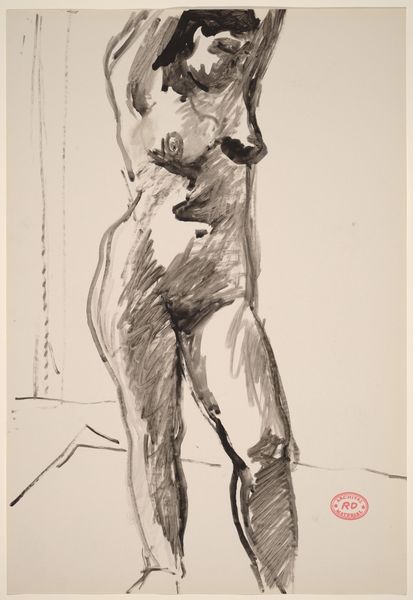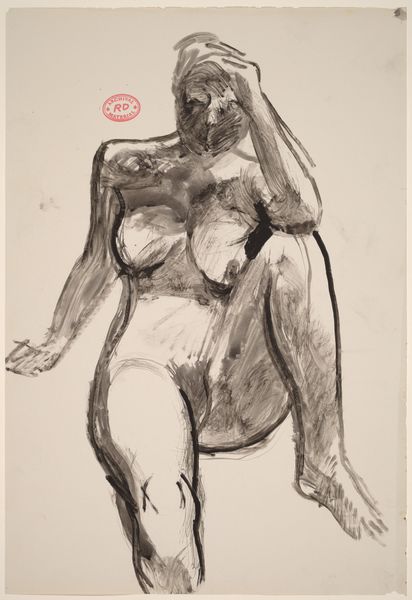![Untitled [seated female nude turned and leaning toward viewer] by Richard Diebenkorn](/_next/image?url=https%3A%2F%2Fd2w8kbdekdi1gv.cloudfront.net%2FeyJidWNrZXQiOiAiYXJ0ZXJhLWltYWdlcy1idWNrZXQiLCAia2V5IjogImFydHdvcmtzL2ViMWZjZGVhLTEyODgtNGM4Ni05MWQ2LWJjMDJlMzNiZDE3OS9lYjFmY2RlYS0xMjg4LTRjODYtOTFkNi1iYzAyZTMzYmQxNzlfZnVsbC5qcGciLCAiZWRpdHMiOiB7InJlc2l6ZSI6IHsid2lkdGgiOiAxOTIwLCAiaGVpZ2h0IjogMTkyMCwgImZpdCI6ICJpbnNpZGUifX19&w=3840&q=75)
Untitled [seated female nude turned and leaning toward viewer] 1955 - 1967
0:00
0:00
drawing, gestural-painting, ink
#
portrait
#
drawing
#
figuration
#
gestural-painting
#
bay-area-figurative-movement
#
ink
#
portrait drawing
#
nude
Dimensions: sheet: 40.6 x 27.9 cm (16 x 11 in.)
Copyright: National Gallery of Art: CC0 1.0
Curator: Here we have an ink drawing by Richard Diebenkorn, created sometime between 1955 and 1967. It's titled "Untitled [seated female nude turned and leaning toward viewer]". Editor: It's raw, isn't it? The heavy brushstrokes… it feels like a quick impression, capturing a fleeting moment of intimacy, or perhaps vulnerability. The lack of facial detail adds to the anonymity, almost as if the woman represents a universal figure rather than a specific individual. Curator: You've touched on something crucial there. Diebenkorn’s figuration, especially his nudes, existed in a tense relationship with the abstract expressionism dominant at the time. The body becomes a site where the abstract and representational negotiate, embodying post-war anxieties surrounding identity and the human form. Editor: Anxieties, eh? To me, there’s a confidence, too, in those bold lines, even a sensuality despite the gestural execution. It’s like he's daring us to piece together the whole story, to fill in the gaps left by the negative space. Maybe the rapid lines represent an unrepeatable flow between artist and subject? It feels spontaneous. Curator: Absolutely, Diebenkorn’s gestural approach invites that reading, yet this spontaneity was often the result of rigorous practice and refinement. His shift towards figuration during a time dominated by abstraction was, in itself, a socio-political statement. It subtly questioned the established artistic hierarchy. The nude has been a symbol of power for so long. What does it mean here? Editor: Hmmm. Makes me think of de Kooning's Woman series, with that fierce, almost grotesque approach to the female form, and the cultural storm those paintings caused. Do you think Diebenkorn was actively challenging those established narratives with this drawing? Curator: Subversively, perhaps. He wasn't as outwardly aggressive. The ambiguity in his nude figures invites dialogue rather than confrontation, perhaps suggesting an attempt to bridge the gap between the traditional canon and the evolving contemporary sensibility. Editor: So it's almost like Diebenkorn is inviting viewers into the studio, witnessing a moment of creation… capturing something real and raw. Thanks, I like looking at it a bit better. Curator: Thank you! Seeing this piece through a contemporary lens allows us to ask: what is our current relation with those postwar conversations about body, mind, and figure?
Comments
No comments
Be the first to comment and join the conversation on the ultimate creative platform.

